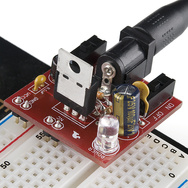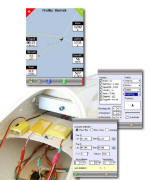

Source: http://www.rctoys.com/pdf/thunder-power-disposal-of-old-damaged-lipo-batteries.pdf
** DISPOSAL OF LIPO BATTERIES **
Unlike NiCd batteries, lithium-polymer batteries are environmentally friendly.
For safety reasons, it’s best that LiPo cells be fully discharged before disposal (however,
if physically damaged it is NOT recommended to discharge LiPo cells before disposal -
see below for details). The batteries must also be cool before proceeding with disposal
instructions. To dispose of LiPo cells and packs:
1. If any LiPo cell in the pack has been physically damaged, resulting
in a swollen cell or a split or tear in a cell’s foil covering, do NOT discharge the battery.
Jump to step 5.
2. Place the LiPo battery in a fireproof container or bucket of sand.
3. Connect the battery to a LiPo discharger. Set the discharge cutoff
voltage to the
lowest possible value. Set the discharge current to a C/10 value, with “C” being the
capacity rating of the pack. For example, the “1C” rating for a 1200mAh battery is 1.2A,
and that battery’s C/10 current value is (1.2A / 10) can be used,
such as a power resistor or set of light bulbs as long as the discharge current doesn’t
exceed the C/10 value and cause an overheating condition.
For LiPo packs rated at 7.4V and 11.1V , connect a 150 ohm resistor with a power rating
of 2 watts (commonly found at Radio Shack)to the pack’s positive and negative terminals
to safely discharge connecting it to an ESC/ motor system and allowing the motor to run
indefinitely until no power remains to further cause the system to function.
4. Discharge the battery until its voltage reaches 1.0V per cell or
lower. For resistive load type discharges, discharge the battery for up to 24 hours.
5. Submerse the battery into bucket or tub of salt water. This container should have a lid,
but it should not need to be air-tight. Prepare a plastic container (do not use metal) of cold
water. And mix in 1/2 cup of salt per gallon of water. Drop the battery into the salt water.
Allow the battery to remain in the tub of salt water for at least 2 weeks.
6. Remove the LiPo battery from the salt water, wrap it in newspaper or paper towels and
place it in the normal trash. They are landfill safe.








